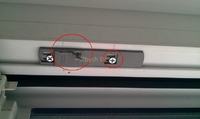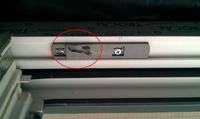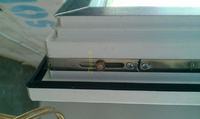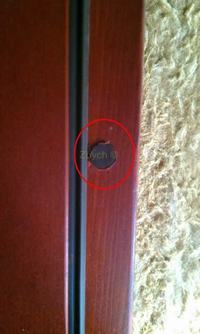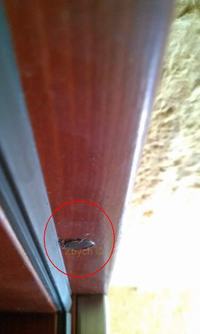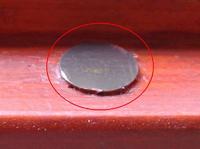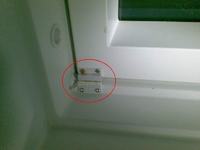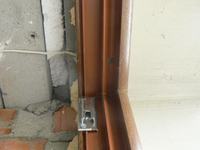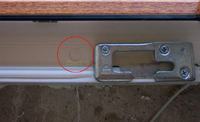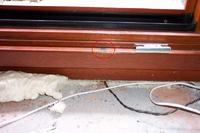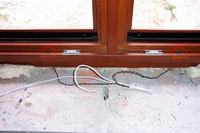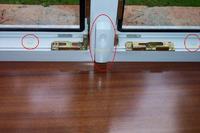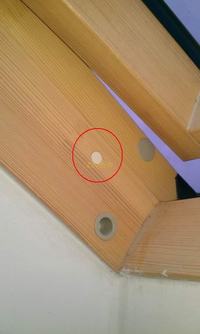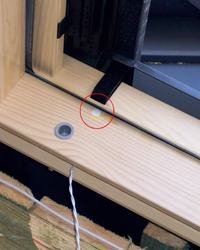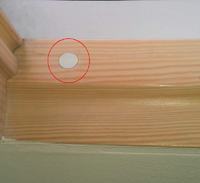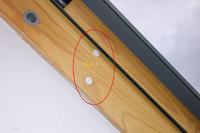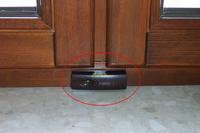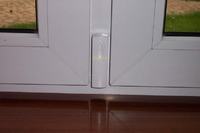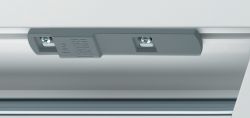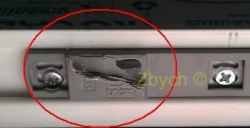Hello everyone :D
I am "green" in the topics of alarms, electrics, etc. and unfortunately I faced the choice of windows and I was completely alone on the battlefield. We are currently building a house, but due to my husband's type of work, it was up to me to make most of the decisions. And here comes the question for you - experts :-)
The gentlemen selling the windows asked if I wanted to have contracts installed in the window frame. Unfortunately, I have no idea if this is a "marketing trick" on their part again, or would such a system actually be useful? In the future, we intend to install an alarm (I admit that the topic has not been explored by me yet), but for now I have to decide on these contractors.
From what they told me, the contracts they install are 4-wire and are located at the bottom of the window frame.
We do not provide any super anti-burglary glass in the windows. We are only considering anti-theft WK1 or WK2 fittings and possibly a handle with a key. Will it not be "doubled" with these contractors? We will probably also have roller shutters on all windows.
Could I ask nice forum members for their opinion on these contractors? Should you buy them factory fitted or install them only later, i.e. at the stage of making the alarm? Should I ask the sellers about these contractors? The price for 1 piece is PLN 40.00 - isn't it too expensive?
Thank you in advance for your help! :D
.................................................. ..........................
Announcement
Also read:
What you should know about alarm opening detectors called reed switches
Alarm system for a single-family house (including perimeter systems) Collection of topics
How to make / prepare wiring for an alarm system - guide
Outputs (programmable and not only) of control panels
How the control panel alarm outputs work
Connecting any detector to any alarm control panel - guide
How to connect the siren to the alarm control panel - guide
We invite you to read the other guides, highlighted topics, articles in the field of security systems such as intercoms, gate and barrier automation, alarm systems, cameras, access control:
Security Systems Tutorials
If you do not find the answer to your question in the above-mentioned topics, please visit the forum:
Security systems
We also encourage you to visit the General Guides section, where you will find materials from other forum sections, including those for people starting their adventure with electronics:
General Tutorials
I am "green" in the topics of alarms, electrics, etc. and unfortunately I faced the choice of windows and I was completely alone on the battlefield. We are currently building a house, but due to my husband's type of work, it was up to me to make most of the decisions. And here comes the question for you - experts :-)
The gentlemen selling the windows asked if I wanted to have contracts installed in the window frame. Unfortunately, I have no idea if this is a "marketing trick" on their part again, or would such a system actually be useful? In the future, we intend to install an alarm (I admit that the topic has not been explored by me yet), but for now I have to decide on these contractors.
From what they told me, the contracts they install are 4-wire and are located at the bottom of the window frame.
We do not provide any super anti-burglary glass in the windows. We are only considering anti-theft WK1 or WK2 fittings and possibly a handle with a key. Will it not be "doubled" with these contractors? We will probably also have roller shutters on all windows.
Could I ask nice forum members for their opinion on these contractors? Should you buy them factory fitted or install them only later, i.e. at the stage of making the alarm? Should I ask the sellers about these contractors? The price for 1 piece is PLN 40.00 - isn't it too expensive?
Thank you in advance for your help! :D
.................................................. ..........................
Announcement
Also read:
What you should know about alarm opening detectors called reed switches
Alarm system for a single-family house (including perimeter systems) Collection of topics
How to make / prepare wiring for an alarm system - guide
Outputs (programmable and not only) of control panels
How the control panel alarm outputs work
Connecting any detector to any alarm control panel - guide
How to connect the siren to the alarm control panel - guide
We invite you to read the other guides, highlighted topics, articles in the field of security systems such as intercoms, gate and barrier automation, alarm systems, cameras, access control:
Security Systems Tutorials
If you do not find the answer to your question in the above-mentioned topics, please visit the forum:
Security systems
We also encourage you to visit the General Guides section, where you will find materials from other forum sections, including those for people starting their adventure with electronics:
General Tutorials



